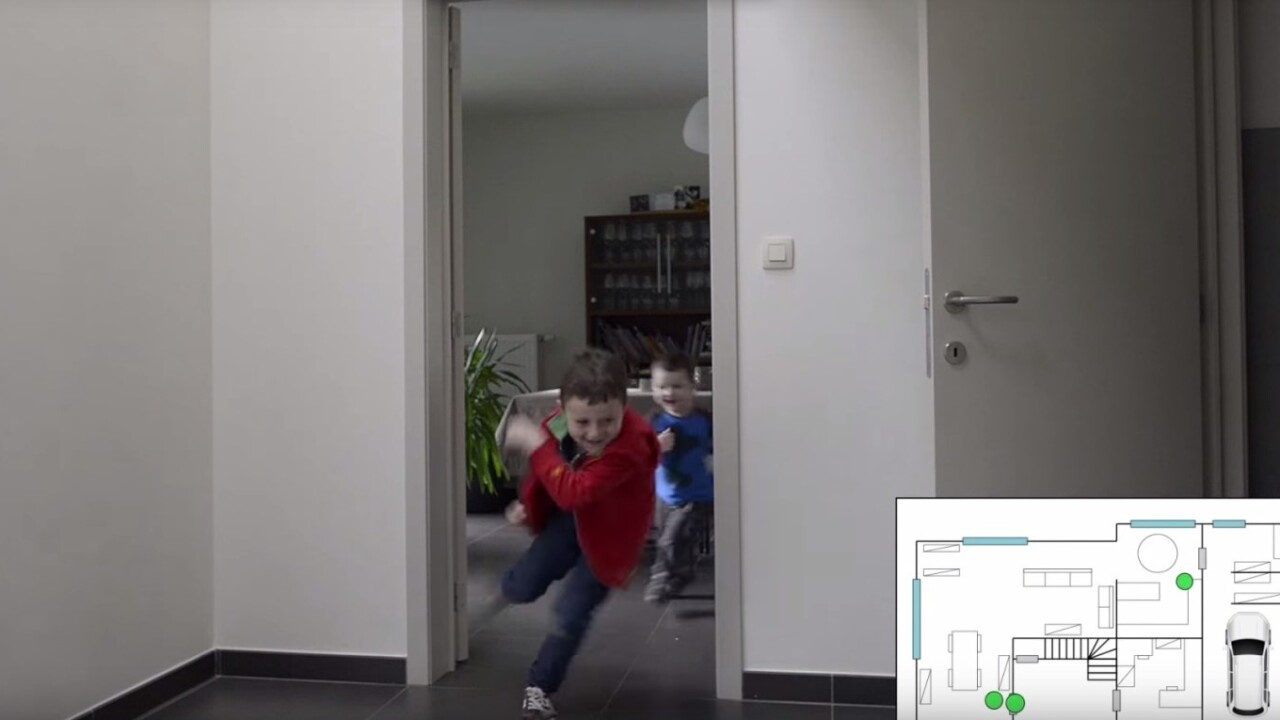
Each week we’re profiling one company that has been selected for Boost – our early-stage startup growth program. Catch up with these companies in person at The Next Web Conference in New York on November 18.
The tech world is becoming excited about the Internet of Things and how our devices and appliances will be able to talk to each other, so they’re easier to use whether you’re at home or thousands of miles away.
Meanwhile, Xetal, a tiny Belgian startup founded two years ago, has been hard at work developing systems that can locate people and objects indoors without the need for cameras — making these spaces smarter, safer and more comfortable to live and work.
I got in touch with the company’s co-founder Francesco Pessolano to find out what the company is up to and what makes them tick.
Tell us what you do in two sentences.
We improve people’s lives by adapting buildings to their needs. Using smart sensors, we can pinpoint people’s location indoors and detect dangerous situations before something untoward happens.
What do your customers use your technology for?
To monitor people to detect accidents for elderly people, criminal activities and building automation.
How did the company come about? What’s your background?
My co-founder and myself are engineers, hardware and software. We built an indoor people tracking technology that would work in real time and could be used for real-time lifestyle monitoring. It needed to be cheap and easy to turn into a product, in contrast to what was being done with cameras or movement sensors. This was back in 2010.
We showed our tech to opinion leaders and they made clear that this technology was not only innovative but it has the potential to revolutionize how people are monitored — especially for care, safety and security.
Hence, we spent 3 more years doing field testing and getting angel investors on board to create the company in 2013.

Who are your biggest rivals, and what makes you different?
Honestly, nobody’s working on products like ours right now. Competitors use wearables (like tags or smartphones), and most also see our technology as a complement more than a competitor.
Get rich or change the world: which would you rather, and why?
We’ve always been aware that a technology-rich company has a difficult and slow life, and its prospects for growing rich are even lower. But that doesn’t really matter to us — we started the company because we believe our technology can have a lasting impact, and that’s what we’re all about.
How big is your team? Tell us one weird fact about a member of your team.
The weird fact of our team is its size. While most start-up boosts teams of ten of more, we are actually just two. We work with collaborators for things like printed circuit board design, sales and so on.
When we look back on what we have accomplished, and look forward to what we are about to do, it amazes us that we were and still are just a couple of engineers.
If you weren’t working on Xetal, what would you be doing?
Probably another startup focused on 3D printing or home automation. Probably with the same co-founder too.
➤ Xetal
Read next: Why a guy who rapped about HTML and a former ‘Masterchef’ contestant built a property app
Get the TNW newsletter
Get the most important tech news in your inbox each week.




